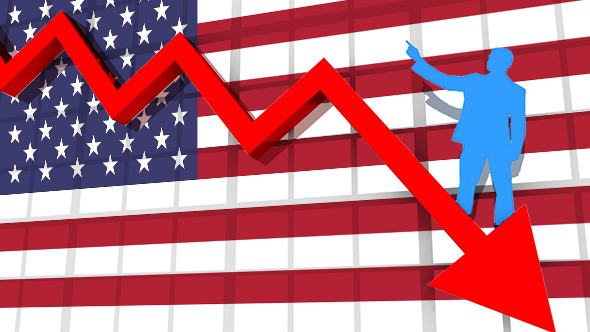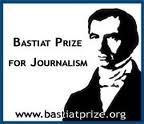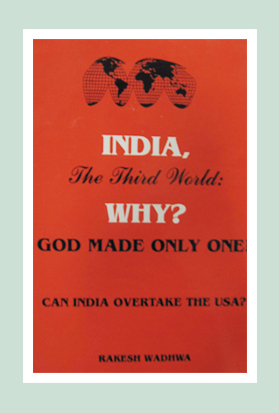What the US Fed Should Have Done Differently

The current state of the American economy is the consequence of a series of self-compounding errors. During the pandemic, the government announced lockdowns, stifling economic activity, and then needed to hand out trillions of dollars of stimulus to trigger economic activity. Neither was the lockdown necessary nor the dolling out of money without any value creation. Having floated almost $5 trillion of cash into the economy, the US shouldn’t have been surprised with the decades high inflation it was dealing with in 2022. That’s economics 101! More money supply will lead to inflation.
To deal with double-digit inflation, the US Federal Reserve used the only monetary policy instrument it has at its disposal – interest rates. Through 2022, the US Fed aggressively hiked interest rates, taking it to 15-year highs. The fed funds rate was raised from between 0% and 0.25% that was set during the pandemic to between 4.25% and 4.50%. Since inflation continued to soar, the US central bank raised rates further in 2023, taking the federal funds rate to a range of 5.00% to 5.25% by May.
So, what should the Fed have done differently? It should never have got into setting interest rates. That’s because the Fed artificially setting the rate hampers the market from functioning effectively. Isn’t it an incredibly hairbrained notion to assume that a handful of policymakers could be more efficient at stabilizing the economy than the entire ecosystem of borrowers and lenders globally?
Will a central body now set the prices of all goods and services in the US? Then why is there an attempt to set interest rates? It should have been left to the market forces of demand and supply, just like any other global marketplace.
Let’s first look at what the Fed’s interference has done to the US and the global economy.
Impact of Fed Rate Hikes
Continued interest rate hikes threaten the economy with recession. Again, that’s economics 101. And that’s exactly what the US is experiencing. A slowdown in business lending, a downturn in the housing market, shrinking manufacturing output, a decline in household consumption and massive layoffs.
The Banking Crisis
The seeds of Silicon Valley Bank’s collapse were sown by the Fed making overnight interest rates absurdly cheap and distorting the entire financial system. This led to the demand for money growing at a much higher pace than was justified by the state of the economy or GDP growth.
Then came the incessant interest rate hikes through 2022 and the first half of 2023, leading to deposits being withdrawn at an alarming rate. SVB customers withdrew deposits of a whopping $42 billion in less than 48 hours.
Moreover, a majority of the bank’s investments were in the tech and biotech sectors. Both these growth-oriented suffered due to the interest rate hikes, resulting in disappointing earnings in the third and fourth quarters of 2022.
Other banks followed suit. And another 160 banks could meet the same fate due to the Fed’s drastic and reckless rate hikes that have rigged all financial asset prices. That has instability written all over it.
The Ripple Effect
The negative impact of rate hikes isn’t limited to the US. The Fed’s monetary tightening falsified the global forex markets. The US dollar being driven to record highs in 2022 impacted the economies of most developed and developing nations.
Also, given the high interest rates, businesses started focusing more on clearing debt than doing what they should be – producing, hiring, and growing.
Obviously, investors were spooked. The US stock market reflected this. The market cap of the NYSE fell from $28.45 trillion in November 2021 to $22.78 trillion in December 2022. The NASDAQ, which includes the growth-oriented tech firms, contracted from $24.32 trillion to $16.23 trillion during the same period.
Leave Interest Rates to the Markets
Now the Fed is gearing up to cut interest rates. Give the markets a break! The market has zillions of significant players who can set the most justifiable interest rate by pursuing their best interest. Just like prices of goods and services, interest rates should be set by the market forces of demand and supply.
The free interplay of borrowers and lenders would set interest rates at what they ought to be. Interest rates are nothing but the price at which lenders are willing to provide loanable funds and there is sufficient demand for those funds from borrowers.
When interest rates are very low, people spend more on their short-term needs as their incentive to save is low. This increases demand for goods, encouraging businesses to expand by borrowing more. The rising demand for corporate loans pushes interest rates higher.
At higher interest rates, people are willing to save more for their long-term goals. This increases the supply of loanable funds, exerting downward pressure on interest rates. At the same time, businesses borrow less when interest rates are high, reducing demand for loanable funds. This, too, leads to a cooling of interest rates.
There’s another way of looking at this. When people save more, it means they will purchase more goods in the future. Their increased savings brings down interest rates, encouraging businesses to borrow and invest. This prepares companies to produce more goods in the future. Effectively, the interplay of market forces that determine the right interest rates also ensures goods are produced when customers need it.
If the Fed really had a way of determining the ‘correct’ interest rate, it would have simply gone ahead and set it. There would be no need for the trial-and-error approach we’ve witnessed so far.
 Rakesh Wadhwa. Ever since, I was a school boy, I knew India was on the wrong path. Socialism was just not what we needed to get ahead. Government controlled our travel; government controlled our ability to buy and sell; and government controlled our freedom to move our money. My life has focused on the inherent rights people have. When I was in college, I never understood, what the governments meant by their "socialistic attitude". If people are free to buy, sell and move their capital themselves without any restrictions by state, then the welfare of people is inevitable & hence the countries they live in will become wealthy. The government has no right whatsoever, to point a finger at me or my business. I am not a revolutionary. I just want to light up my cigarette and not get nagged about it. I believe in non-interfering attitude to attain more.
Rakesh Wadhwa. Ever since, I was a school boy, I knew India was on the wrong path. Socialism was just not what we needed to get ahead. Government controlled our travel; government controlled our ability to buy and sell; and government controlled our freedom to move our money. My life has focused on the inherent rights people have. When I was in college, I never understood, what the governments meant by their "socialistic attitude". If people are free to buy, sell and move their capital themselves without any restrictions by state, then the welfare of people is inevitable & hence the countries they live in will become wealthy. The government has no right whatsoever, to point a finger at me or my business. I am not a revolutionary. I just want to light up my cigarette and not get nagged about it. I believe in non-interfering attitude to attain more. 
 The Bastiat Award is a journalism award, given annually by the International Policy Network, London. Bastiat Prize entries are judged on intellectual content, the persuasiveness of the language used and the type of publication in which they appear. Rakesh Wadhwa won the 3rd prize (a cash award of $1,000 and a candlestick), in 2006.
The Bastiat Award is a journalism award, given annually by the International Policy Network, London. Bastiat Prize entries are judged on intellectual content, the persuasiveness of the language used and the type of publication in which they appear. Rakesh Wadhwa won the 3rd prize (a cash award of $1,000 and a candlestick), in 2006.
What the readers are saying…